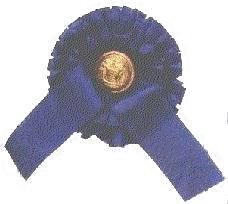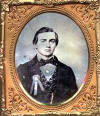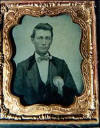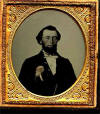|
Early
war events are on their way! Enjoy the newsletter, don't forget to order your Rich Mountain uniforms, and if you have any questions, please ask. -Chris Daley |
|||||
|
|
|||||
|
| CJ Daley eNews |
April 2006 |
In this Issue
Latest News
|
Shelter Halves on Sale
NOTE: We can also offer discounts on tents if you order 5 or more at on time. E-mail us for details. |
|
|
|
Rich Mountain Specials End
Soon! |
|
Price Reduced on rubber capes |
|
Limited Run of Scarves on hand We have 6 100% wool scarves on hand at this time. One each of brown, green and red. The scarves are entirely hand knit and cost $60.00 postage paid. I don't expect anymore this winter so if you need them, place your order today. Please specify color when ordering. |
|
2006 Schedule Below is a tentative list of events we are planning on attending:
|
Gettysburg Retail Store Winter Hours
Wednesday: 10am-3pm |







